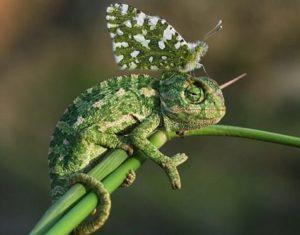4 most dangerous butterflies for humans
With the onset of hot summer, gardens, parks and forests are filled with many beautiful, colorful butterflies. They look very cute and completely defenseless. However, there are also species in the world that are not as innocent as it might seem at first glance and these are poisonous butterflies.
Content
Photo of poisonous butterflies
Features of poisonous butterflies
All representatives of the Lepidoptera order are rather fragile creatures and in order to survive they have to protect themselves from predators.
Some species of butterflies try to disguise themselves and blend in with their surroundings like a chameleon, while others, on the contrary, are painted in bright, acid colors that warn predators of possible poisonousness.
But, there are quite a few species that retain dangerous substances even after turning into an adult.
In most cases, the poison is accumulated by caterpillars in the process of eating poisonous plants and remains in the body of the insect. At the same time, these toxins do not affect the carriers themselves. Some species of butterflies even have special poisonous glands on their abdomens.
What danger do poisonous butterflies pose to humans?
The poisonous substances of butterflies, in fact, do not differ from those that contain poisonous caterpillars of the same species. Contact with such insects can create the following problems for a person:
- redness and irritation on the skin;
- labored breathing;
- rash and conjunctivitis;
- inflammatory processes;
- increased body temperature;
- disorder of the digestive system.
The most dangerous types of poisonous butterflies
Among the variety of Lepidoptera that are able to protect themselves with the help of toxins, there are several of the most common and dangerous species.
Goldentail or golden silkworm
The Golden-fleece - this is a small furry white moth and it is very difficult to recognize a poisonous insect in it. Contact with goldentail hairs can cause skin irritation and conjunctivitis in humans. You can meet a butterfly of this species in Europe and North America.
Kaya bear
Bears - This is a numerous species of moths, which is widely distributed throughout most of the Northern Hemisphere. They boast special glands on their abdomens, from which they release toxic substances when they encounter an enemy. The poison is released as a yellow-green liquid with a pungent odor and can lead to an allergic reaction, conjunctivitis and inflammation.
Monarch
Monarch butterflies live mainly in North America, but can also be found in Europe and North Africa. Glycosides, which contain insects, are dangerous for small mammals and birds, and can also cause unpleasant symptoms in humans.
Sailboat antimach
This species is very little studied and is considered the largest representative of Lepidoptera living on the territory of the African continent. The insect is native to the rainforests of Uganda. Feeling the approach of danger, the moth sprays a special substance with a sharp, unpleasant odor in the air.
Scientists call the antimachus the most poisonous butterfly in the world.
Conclusion
Butterflies and moths are quite vulnerable creatures, so nature took care of them and taught them to accumulate toxins inside the body that can be used to protect against enemies. It is likely that this skill saved many species of Lepidoptera from extinction.
